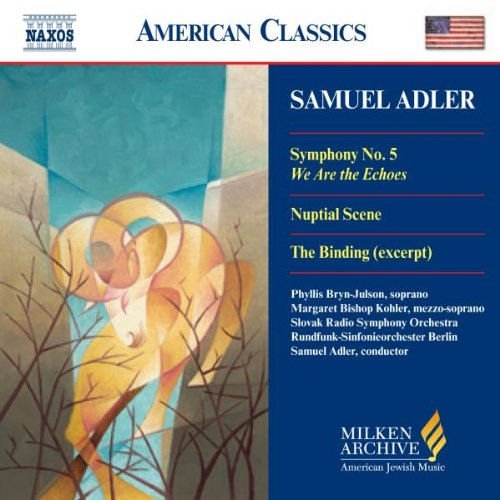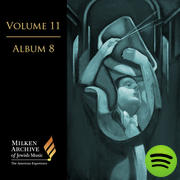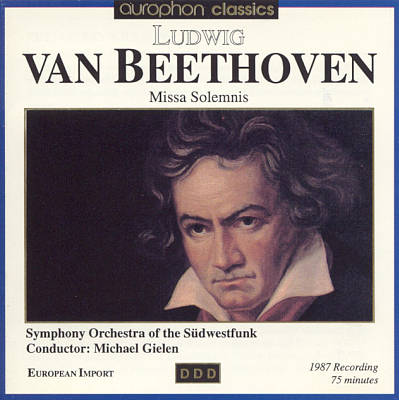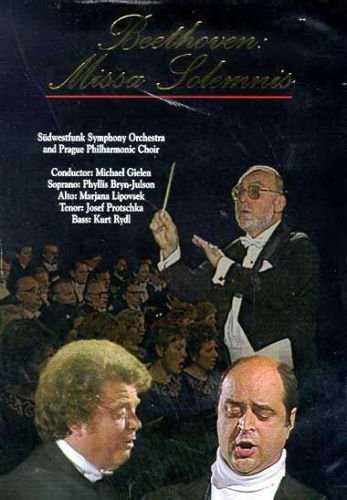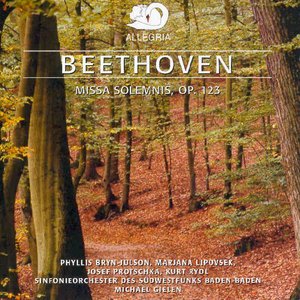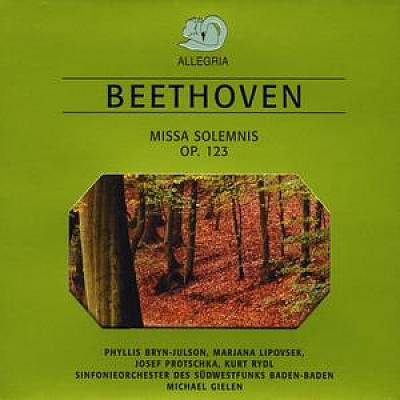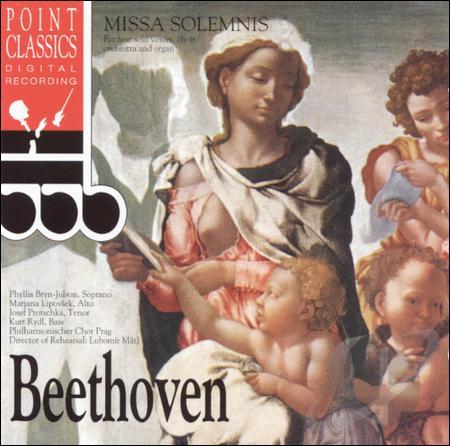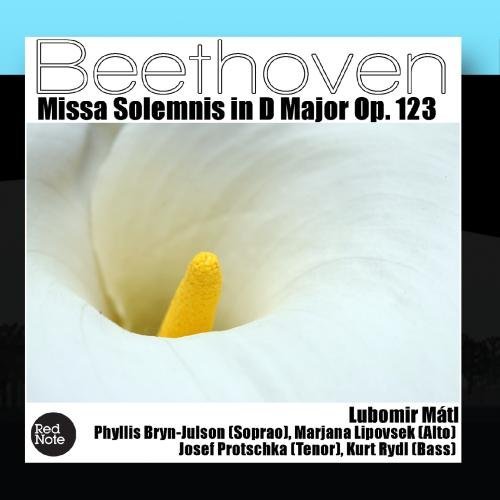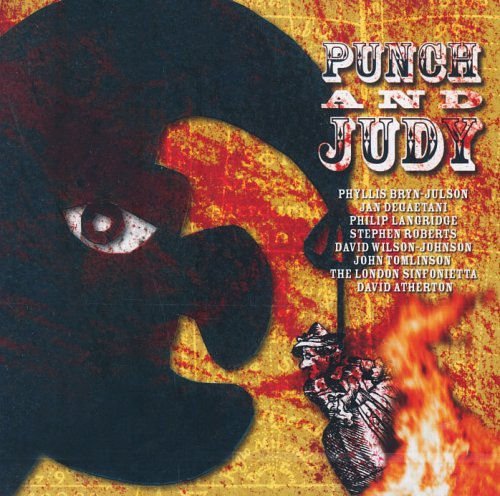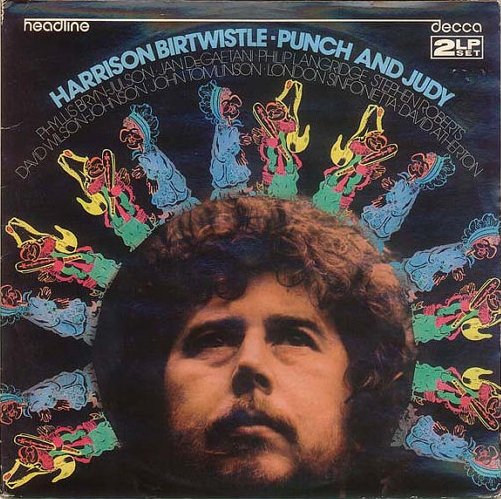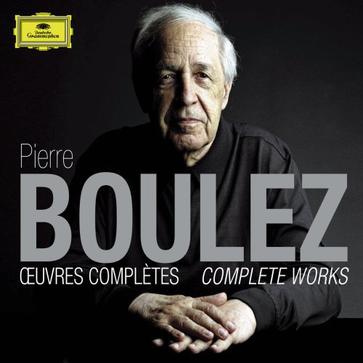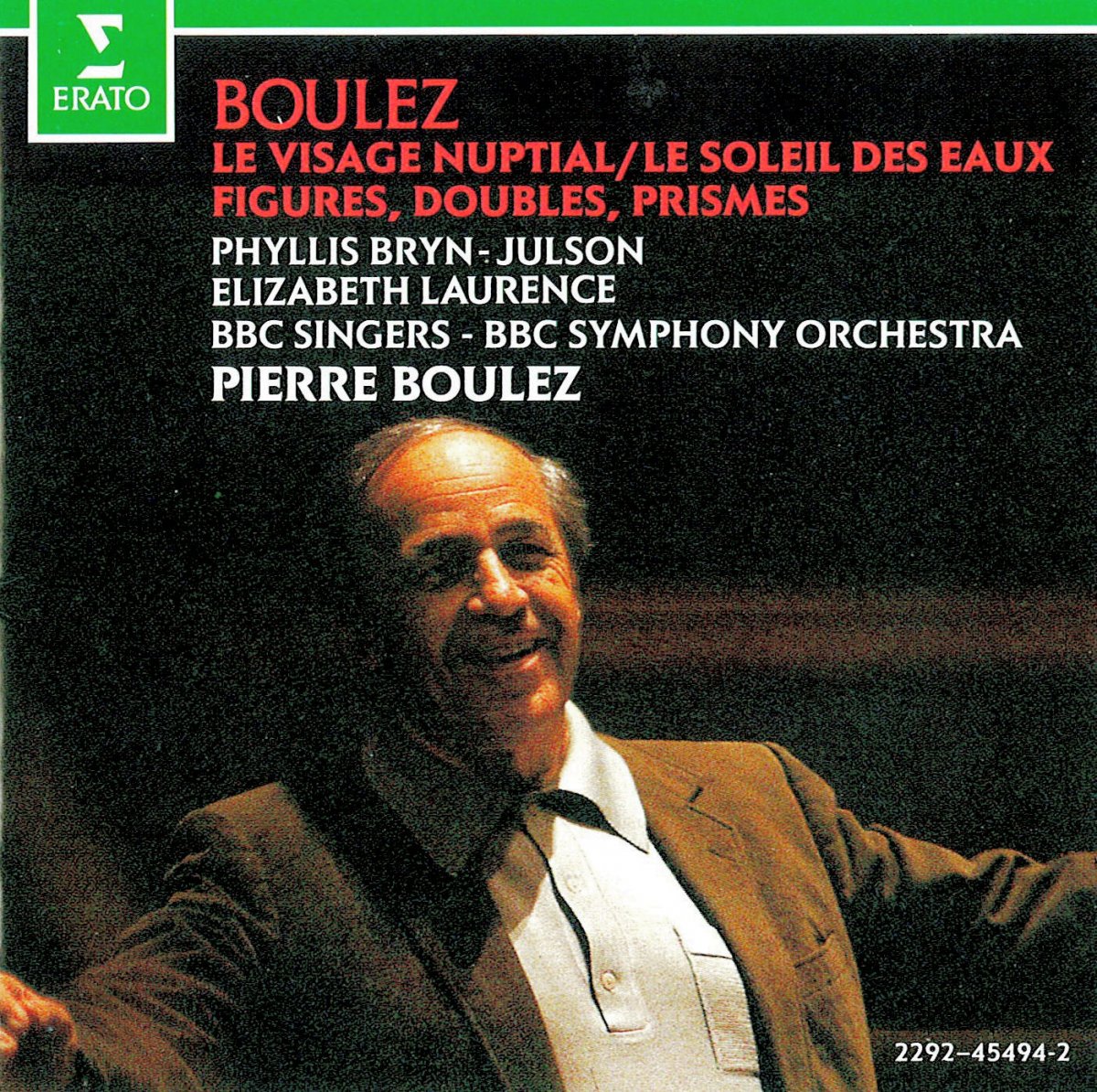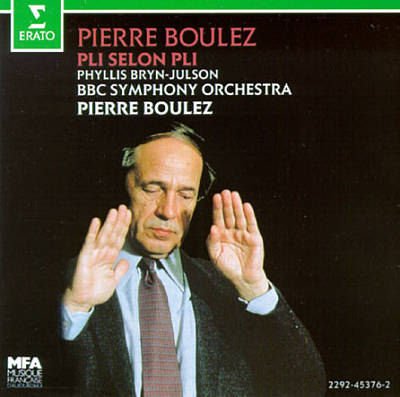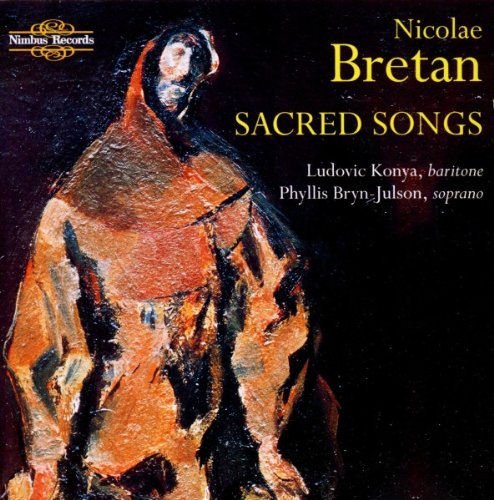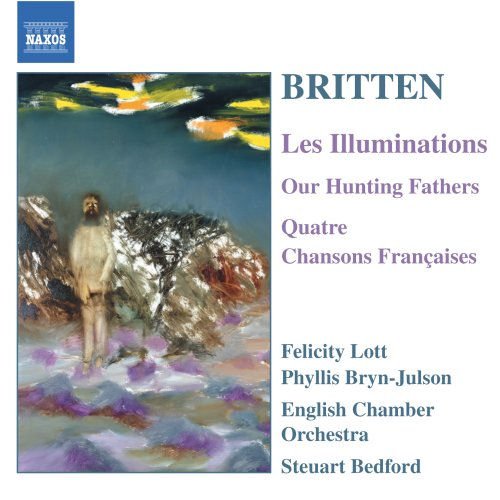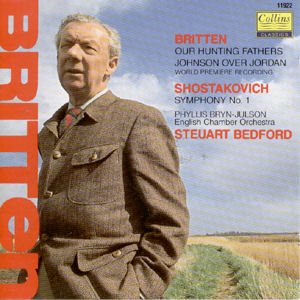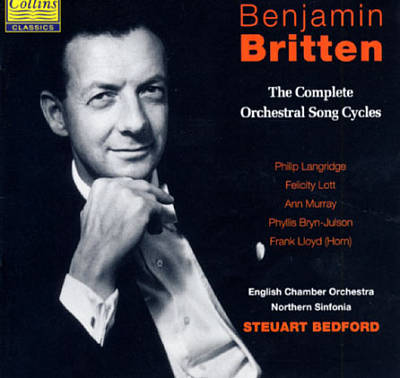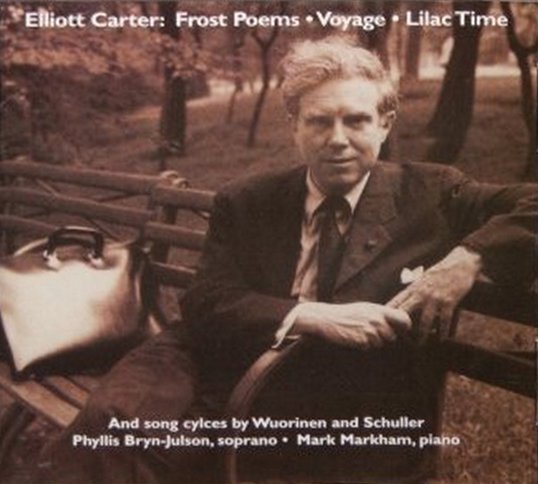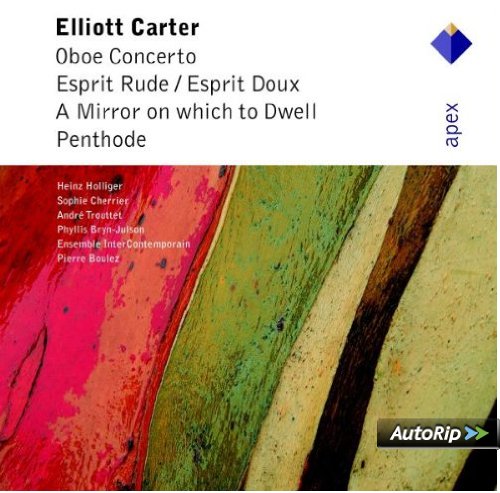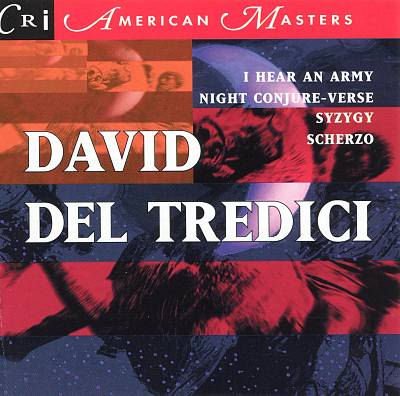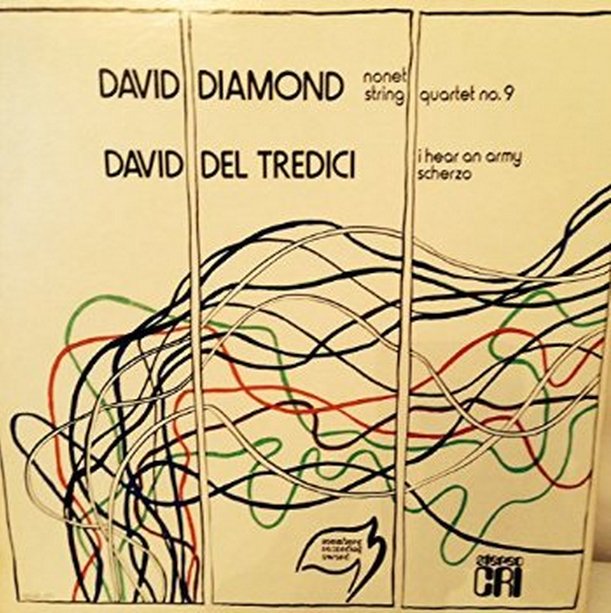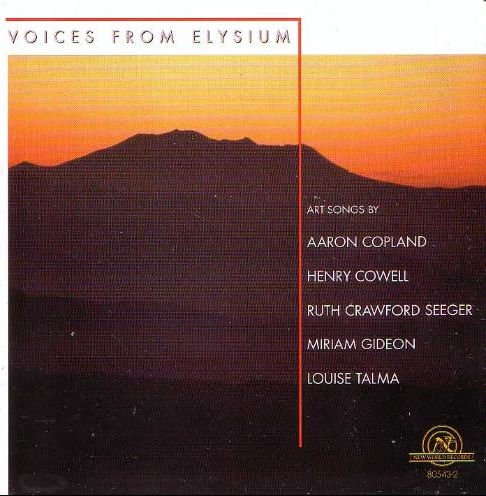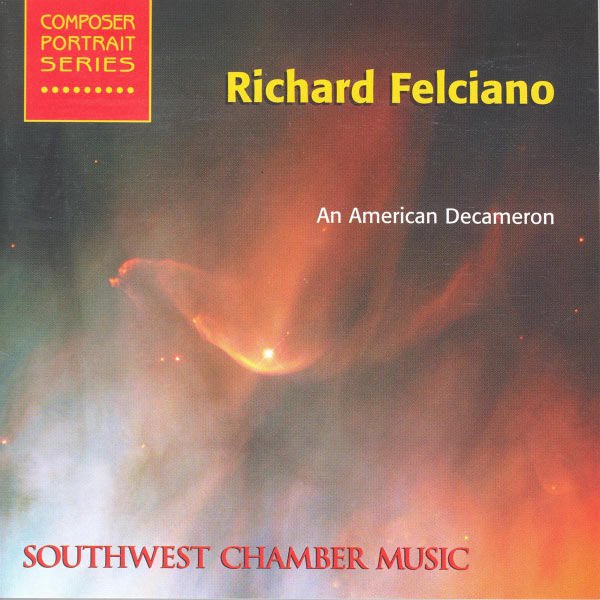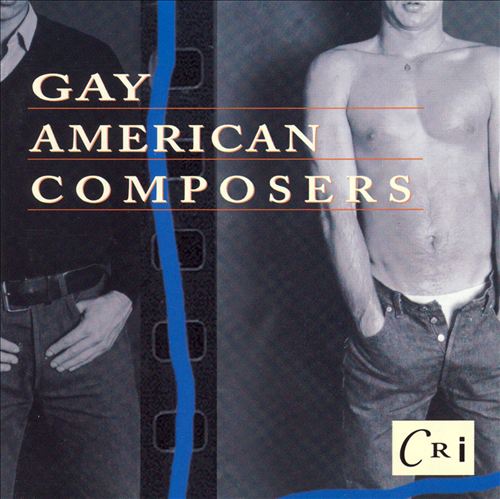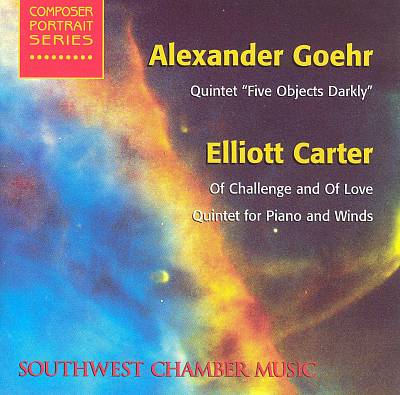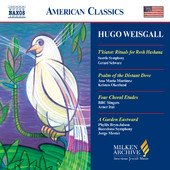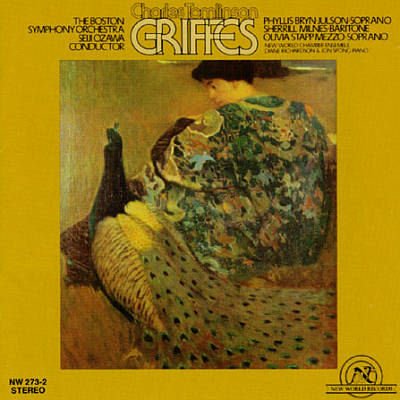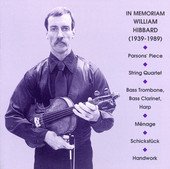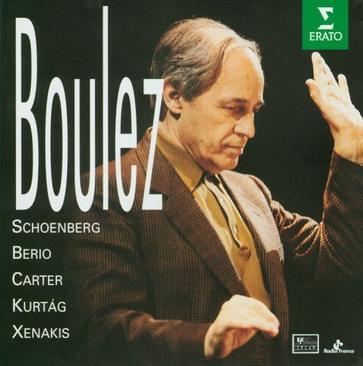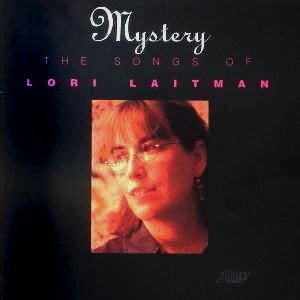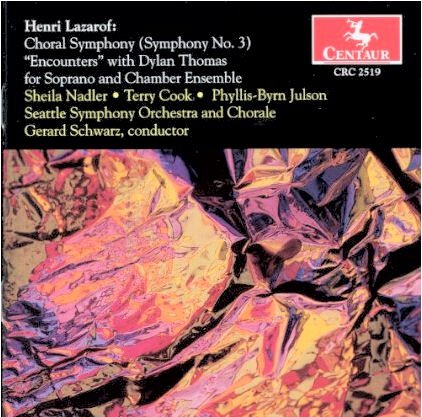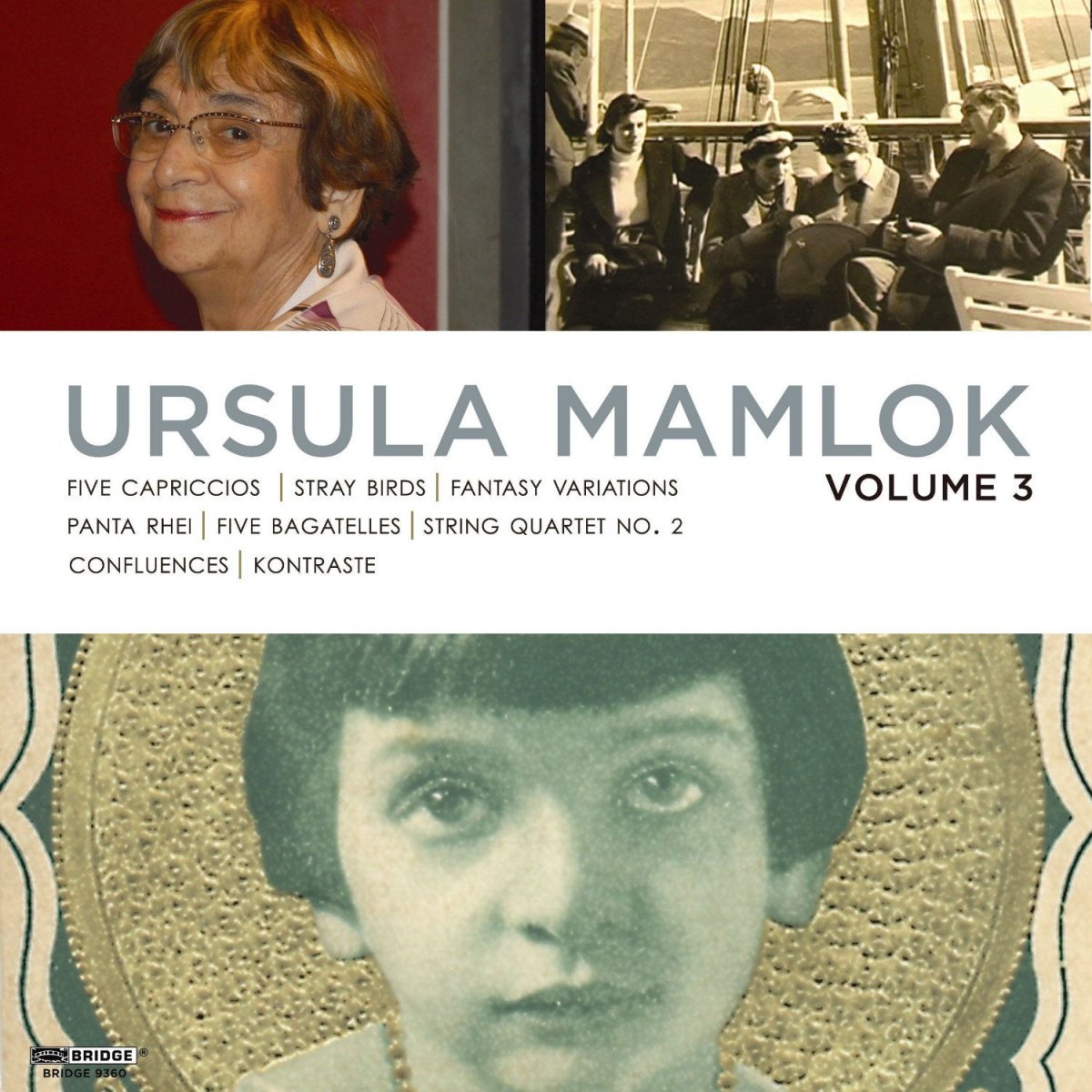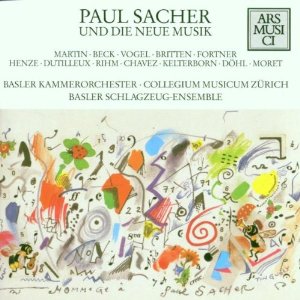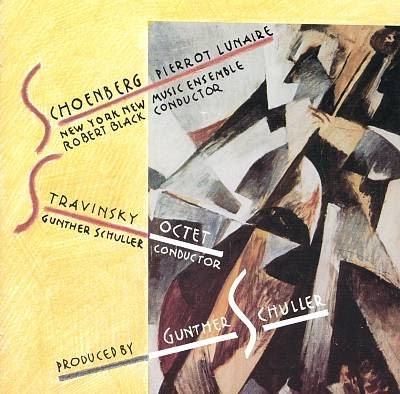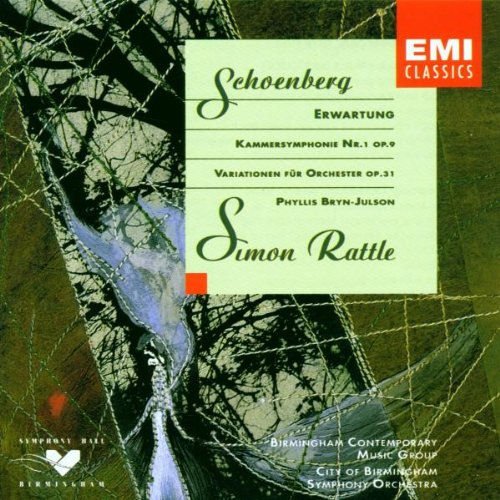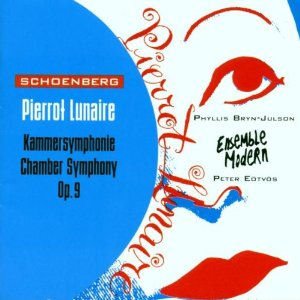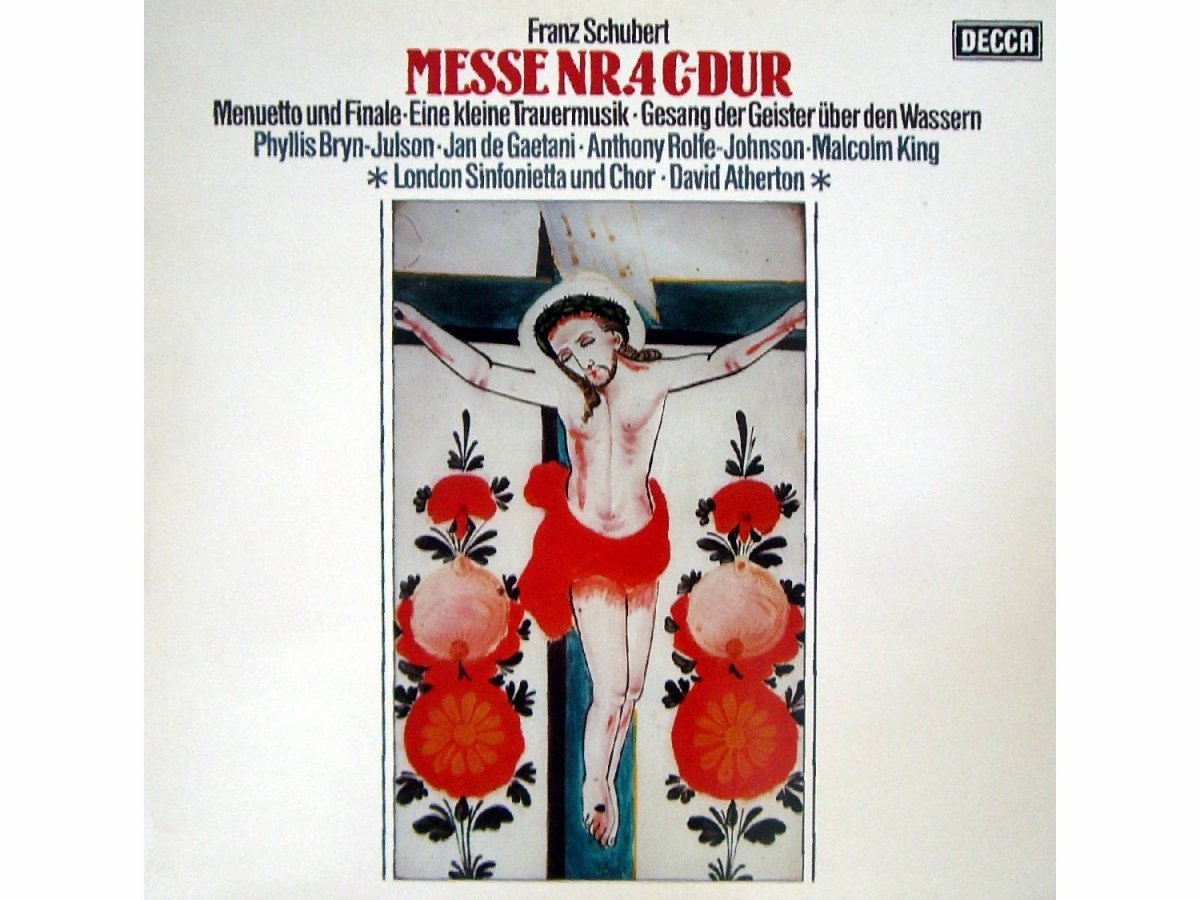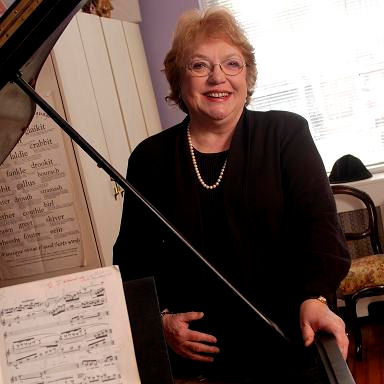
Phyllis Bryn-Julson Interview
(Version française plus bas)
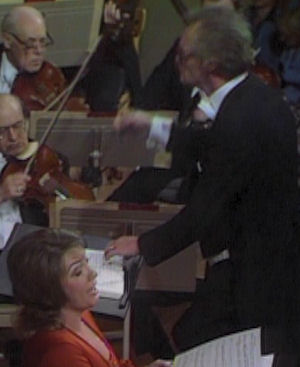
Interview
TV: I unfortunately haven’t met you for almost thirty years by now… it’s about time to make a point!
First of all, knowing your musical talents, you could have become as well a pianist or violinist, etc. Do you think it would have been an easier life, knowing all the constraints needed to protect one’s voice’s health?
PBJ: While I am grateful to have been brought up in a musical family, each of whom had an instrument to play, and for me to receive lessons in violin, organ, piano and voice, it would have been difficult to make a career in piano or violin. The first, piano, was because my fingers are unfortunately somewhat short, and though I have performed publicly as a recital collaborator, it was with a repertoire that I was sure I could handle. I began violin too late to be taken seriously on it. However, all that being said, studying these other instruments (piano lessons from age 2 through college), made me that much stronger and more assured musically. I often credit my piano teachers with musical ideas as much as I do my singing teachers. It has also shown me, however, how ill-prepared our young students are, who arrive at the Conservatory unable to read music well. I was very fortunate to be on a farm, in the middle of North Dakota, with no TV, but a piano, instruments and singers. Everyone sang!
TV: I know about the bus accident in your youth which prevented you later on to be part of opera representations. Eventually, was it a great miss or did it allow you to concentrate on more specific repertoires?
PBJ: I was fortunate to be able to sing opera often, staged and concert version. Even with the injury I had at the beginning, I was able later on to be on the operatic stage in Boston, and eventually Covent Garden, though by that time, I had already begun my adventure into the contemporary repertoire, which put me on a very different career path. Coupled with many wonderful concert performances of solo works and oratorio, and with some of the best orchestras in the world, I can say that musically I had an amazing opportunity at every turn. Singing with the Boston Symphony, Chicago, New York Phil, London Symphony, Berlin Philharmonic, BBC and so many more, was the most satisfying and gratifying musical experiences I could ever imagine.
TV: Your repertoire is hugely extensive, especially in modern music; thus you’ve sung composers so different, for example, such as Pierre Boulez, David Del Tredici or Harrison Birtwistle. Did it make a big difference for you and could you tell us where go your preferences: post-dodecaphonists, neo-moderns…
PBJ: I believe what caught my fancy early on was the Schoenberg « Klavierstücke » which was sitting on my piano teachers’ piano while I was still in high school. I glanced at it and asked her about it. She said I could just take it and keep it. I went home and was smitten, thinking how unusual it was (not really of course, by today’s standards), but being young, I thought there must be more out there. It was at Tanglewood I came across Webern Op. 23. At the time there were several peers at Tanglewood with perfect pitch. A pianist and I would go off and sight read the Webern, then go back and look for more and do the same. Again, my interest was such I couldn’t let go of the idea that there must be much more out there. It was then I learned the string quartet « I hear an army » by David del Tredici… a different style altogether, but again, I was now completely curious about the new.
Being grounded, however, with performances of Bach, Handel and Mahler with symphony orchestras, my voice was being challenged to keep its technical place with the old repertoire, but use the same sense of line, beauty and ease in the modern as well.
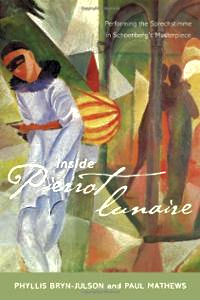
Along came a HUGE change in everything with learning « Pierrot Lunaire ». I sang it first in Vienna with Friedrich Cerha conducting. This was clearly a life/voice changing challenge, and having to figure out how to manage straight tone singing with the same line, legato and beauty as singing songs of Mozart, for example, took me several years and performances to perfect as best as possible. It was this very piece that changed everything for me, from how to really sing Brahms songs, or Schumann and take the expressiveness back as well as bring it forward into this ‘modern’ rep. It was such a huge undertaking that eventually I convinced my colleague, Dr. Paul Mathews, to help me put it into a book called « Inside Pierrot Lunaire ».
I couldn’t possibly have a preference for a particular style. I ventured into all of it, again relying on my knowledge and training of the past repertoire. When faced with the beautiful « Pli selon pli » by Pierre Boulez, I looked to the piano and vocal works of Debussy. It was fun AND hard work, to find correlations to the past. If it was the Berio « Circles », that gave me yet another dimension that was difficult to connect to, except that his setting of the E. E. Cummings texts were so incredibly stunning, one couldn’t help but be taken in immediately. In America, one of the most difficult compositions happens to be by Charles Wuorinen. But, I had long ago learned to see how a piece ended before reading through the work. When I was sent the score of « A Winters’ Tale » by him, I did just that, and was smitten. It was only later when learning it, that I realized how terribly difficult it was to sing!
I think the only time I had momentary hesitations, was when I was asked if I would do « Le marteau » by Boulez and « Pierrot » on the same program. I had to pause… could I really manage this mentally, let alone physically and technically. I had to ask advice for the first time, from the great mezzo, Jan de Gaetani. She was the only one who might have ventured into such daredevil performing. She couldn’t be certain but gave me the answer « if anyone can do it, you can ». With that sort of declaration of support, I gave it a whirl. It was a performance in Berlin with Peter Eotvos conducting. The problem was that the concert next door with Abbado conducting his first night with the Berlin Philharmonic, was scheduled to include « La Damoiselle Elue » by Debussy. The singer backed out that morning and I was asked to sight read after a very short rehearsal only with piano and Maestro Abbado. This 10 minute work that I didn’t know at all, ended up putting an extra burden on me that I simply refused to think about. After finishing, I went to the second hall, where I proceeded with Marteau and Pierrot. It was at about song 16 in Pierrot that I thought I was probably going to lose it. Something kept me going, but it will remain a blur as to how that all worked out that LONG evening! I don’t remember the end at all!
TV: Philippe Manoury, one of the greatest alive composers, had been in the USA for many years and told me that if contemporary music was studied a lot at the University, it had a tendency to disappear from the American musical life, when it is still dynamic in Europe, notably in Germany. Do you share this opinion?
PBJ: I have admired Mr. Manoury for a very long time. I think his feeling about the performances of the rep may be true in some areas of the country, but I have had great hope over the last several years, because of the success of my own students and those who take my course in the 20th century music for the voice, that we may have turned a corner. More of our students are actually making a living in very creative ventures, and incorporating the music of the last 50-75 years in their performances with great success. There are ensembles that are being created to do the great chamber pieces from that period. Certainly they are alive on campuses at universities, in museums, and in conservatories. The public wants to be educated, however, because of the lack of such studies in our public school systems. It remains a mission of many of us educators to try to get back what we lost about 30 years ago. Fortunately, places like Tanglewood and Aspen remain a high standard in new compositions, combining the old with the new. I remain positive that music is and always will be the one true connection in this world, between continents, cultures, and people.
French
TV: Cela fait maintenant presque 30 ans que l’on ne s’est vus, il serait peut-être temps de faire le point ! Tout d’abord, connaissant vos talents musicaux, vous auriez pu devenir aussi bien pianiste que violoniste par exemple. Pensez-vous que cela aurait pu vous donner une vie plus facile, quand on connaît les contraintes que l’on doit subir pour protéger sa voix ?
PBJ: Tout en étant reconnaissante d’avoir été élevée dans une famille musicienne, chaque membre jouant d’un instrument, et d’avoir reçu un enseignement de piano, violon et chant, il aurait été très difficile pour moi d’envisager une carrière de pianiste ou de violoniste. D’abord le piano, car malheureusement mes doigts sont assez courts, même si je suis apparue comme accompagnatrice en public, c’était dans un type de répertoire que j’étais sûre de pouvoir maîtriser. Quant au violon, je l’ai pratiqué bien trop tard pour pouvoir poursuivre sérieusement. Ceci dit, étudier ces instruments (j’ai pratiqué le piano de l’âge de 2 ans jusqu’au collège) m’a donné de l’assurance au niveau musical. Je dois autant musicalement à mes professeurs de piano qu’à mes professeurs de chant. Cela m’a montré également combien nos jeunes étudiants sont mal préparés, arrivant au Conservatoire sans être à même de lire la musique correctement. J’ai eu de la chance finalement d’avoir été élevée dans une ferme du Dakota du Nord, sans télé mais un piano, des instruments et des chanteurs : tout le monde chantait
TV: Je sais que vous avez eu un accident étant jeune qui vous a plus ou moins empêché de mener une carrière à la scène. Finalement, fut-ce une grande perte ou cela vous permit-il de vous concentrer sur des répertoires plus spécialisés ?
PBJ: J’ai eu la chance de faire souvent de l’opéra, aussi bien sur scène qu’en version de concert. Malgré mon accident, j’ai pu plus tard chanter sur scène à Boston ou plus tard à Covent Garden, bien qu’à cette époque je commençai mon aventure dans le répertoire contemporain, qui orienta différemment ma carrière. Si l’on ajoute tous les superbes concerts en tant que soliste ou en oratorio, avec les meilleurs orchestres du monde, je peux dire que musicalement j’ai eu en permanence de magnifiques opportunités. Chanter avec le Boston Symphony, Chicago, New York Phil, London Symphony, Berlin Philharmonic, BBC et bien d’autres m’ont apporté des succès et des bonheurs que je n’aurais pu imaginer. [TV : elle a chanté avec les plus grands : Abbado, Atherton, Bernstein, Boulez, Eotvös, Gibson, Gielen, Knussen, Ozawa, Salonen, Slatkin, Tennsdedt, etc.]
TV: Votre répertoire est immense, notamment en musique moderne. Vous avez interprété des compositeurs bien différents, comme Pierre Boulez, David Del Tredici ou Harrison Birtwistle. Cela faisait-il une grande différence pour vous et pouvez-vous nous dire où vont vos préférences ?
PBJ: Je crois que mon intérêt pour la musique moderne s’éveilla quand je vis la partition des « Klavierstücke » de Schoenberg sur le piano de mon professeur alors que j’étais encore au lycée. Je regardais cette partition et lui posai des questions à son sujet. Elle me dit que je pouvais la prendre et la garder. Je rentrai à la maison et fut de suite séduite, pensant combien cette musique était inhabituelle (pas vraiment aujourd’hui !), mais j’étais jeune et je pensai qu’il y avait là matière à découvrir. C’est à Tanglewood que je me familiarisai avec l’Op. 23 de Webern. A l’époque il y avait plusieurs étudiants possédant l’oreille absolue. Un pianiste et moi allions déchiffrer Webern, le rejouant encore et encore. De nouveau, mon intérêt était tel que je pensais qu’il y avait encore beaucoup de choses à découvrir. C’est alors que je vins à apprendre le quatuor à cordes « I hear an army » de David del Tredici… un style complètement diffèrent, mais encore cette fois, j’étais tout à fait curieuse de la nouveauté.
Ceci dit, ma voix s’était développée avec des concerts Bach, Handel ou Mahler avec des orchestres symphoniques : elle devait garder son niveau technique requis par le répertoire ancien, mais développer aussi bien le même sens de la ligne, de la beauté et de la virtuosité dans le répertoire moderne.

Étudier le « Pierrot Lunaire » fut un énorme changement pour moi. Je le chantai la première fois à Vienne sous la direction de Friedrich Cerha. Ce fut vraiment un grand changement et pour ma voix et pour moi-même et un grand challenge : trouver comment conserver une ligne de chant avec la même tenue, le même legato et la même beauté que si je chantais des airs de Mozart par exemple : cela me prit des années et de nombreuses prestations pour chanter cela avec la plus grande perfection possible. C’est cette œuvre qui changea tout pour moi : comment bien chanter, expressivement, Brahms ou Schumann et transmettre cela au répertoire moderne. Ce fut un tel investissement que je finis par convaincre mon collègue, Dr. Paul Mathews, d’en écrire les tenants et aboutissants dans le livre « Inside Pierrot Lunaire ».
Je ne saurais donner une préférence pour tel ou tel style. Je les ai tous parcourus, me fiant sur ma connaissance et ma pratique du répertoire du passé. Lorsque j’ai été confrontée au magnifique « Pli selon pli » de Pierre Boulez, j’ai étudié les partitions vocales et pianistiques de Debussy. C’était à la fois amusant et difficile de trouver des corrélations avec le passé. Quand il s’agissait des « Circles » de Berio, cela fut une autre dimension difficile à appréhender, mais son travail sur les textes d’E. E. Cummings était tellement extraordinaire que l’on ne pouvait qu’être « happé ». Aux USA, les œuvres les plus difficiles auxquelles j’ai eu à me confronter étaient celles de Charles Wuorinen. Mais j’avais appris depuis longtemps à savoir comment une pièce allait se terminer sans la parcourir en entier. Lorsque je reçu sa partition « A Winters’ Tale », c’est ce que je fis et je fus éblouie. Ce n’est que plus tard en l’étudiant en détail que je compris combien c’était difficile à chanter !
Je crois que la seule fois où j’eus de passagères hésitations, ce fut lorsque l’on me demanda de faire « Le marteau » de Boulez et « Pierrot » dans le même programme. Je dû faire une pause : étais-je capable de réaliser cela seulement mentalement, sans parler physiquement ou techniquement… Je dû pour la première fois demander l’avis de la grande mezzo, Jan de Gaetani. Elle était la seule qui aurait pu se lancer dans un programme aussi casse-cou. Elle ne put me donner un avis définitif, mais répondit : « si un seule personne peut le faire, c’est toi ». Avec ce genre de recommandation… Cela se fit lors d’un concert à Berlin avec Peter Eotvös Le problème est qu’un concert donné à côté était les débuts d’Abbado avec le philharmonique de Berlin – au programme : « La Damoiselle Elue » de Debussy. La chanteuse prévue avait décliné le matin même et on me demanda de chanter à vue cette partition, après seulement une brève répétition avec un pianiste et Abbado. Cette pièce de 10’ que je ne connaissais pas du tout me mettait une charge supplémentaire que je refusai simplement de prendre en considération. Une fois donnée, je rejoignis la 2e salle de concert pour le Marteau et Pierrot. C’est environ à la 16e pièce du Pierrot que je pensais que j’allais sombrer. Quelque chose m’a permis de finir, mais comment j’ai pu le faire tout au long de cette longue soirée reste un mystère : je ne me suis même plus jamais rappelé la fin !
TV: Philippe Manoury, un des plus grands compositeurs actuels a passé de nombreuses années aux USA et me dit que si la musique contemporaine était volontiers étudiée à l’Université, elle avait tendance à disparaître de la vie musicale américaine, alors qu’elle présente toujours un certain dynamisme en Europe, notamment en Allemagne. Partagez-vous son avis ?
PBJ: J’ai toujours eu beaucoup d’admiration pour Philippe Manoury, et ce depuis longtemps. Je pense que sa perception sur la place de la musique contemporaine aux US est sans doute vraie dans certaines régions du pays, mais j’ai de grands espoirs en regardant les dernières années à cause du succès de nombre de mes propres élèves et de ceux qui prennent des cours de chant du XXe siècle : je crois que l’on a franchi un cap. De plus en plus de nos étudiants vivent grâce à projets créatifs, incluant dans leurs programmes des œuvres des 50 ou 75 dernières années, avec grand succès.
De nombreux ensembles se créent pour jouer les pièces de musique de chambre de cette période. Ils sont certes actifs dans les campus universitaires, les musées, les conservatoires. Le public veut se cultiver de toutes façons, ne serait-ce qu’à cause des manques de notre système d’éducation publique. Cela reste cependant une mission pour beaucoup d’éducateurs de tâcher de retrouver ce que nous avons perdu depuis près de trente ans. Heureusement, des endroits comme Tanglewood ou Aspen conservent un haut niveau pour la musique contemporaine, associant vieux et nouveau répertoires. Je reste optimiste sur le fait que la musique est et sera toujours un lien véritable en ce monde, eu travers des continents de la culture et des peuples.

